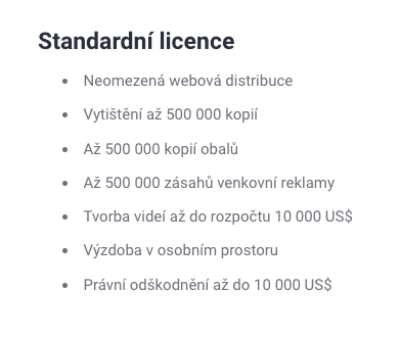Shutterstock is a popular platform for photographers and videographers to sell their work, but there are important aspects that potential sellers should know before diving in. Understanding the nuances of the selling process and debunking common myths can significantly impact your success on this platform.
Understanding the Shutterstock Selling Process

Selling on Shutterstock involves several key steps. First, you need to create an account and submit your content for review. This includes images, videos, and illustrations. Once your work is approved, it becomes available for customers to purchase. Earnings are generated each time your content is downloaded. However, it’s crucial to understand that the payout structure is based on a tier system, where contributors earn more as they sell more. Additionally, you’ll need to keep track of copyright and licensing, ensuring your work doesn’t infringe on others’ rights.
The quality of your submissions is paramount. Shutterstock has specific guidelines regarding the technical quality and composition of images. Contributors should focus on producing high-resolution content and adhering to these standards to enhance their chances of approval and sales. Regularly uploading fresh and relevant content can also help maintain visibility on the platform.
Common Myths About Selling on Shutterstock
Many misconceptions surround selling on Shutterstock that can mislead new contributors. One common myth is that simply uploading images guarantees sales. However, due to the sheer volume of content available, standing out requires a strategic approach to keywording and SEO. Another misconception is that photographers can only sell exceptional works; in reality, there is a market for various types of content, including niche images and everyday scenes.
Some also believe that once their content is uploaded, they can forget about it. In fact, regularly reviewing and adjusting keywords, engaging with trends, and updating portfolios can drive better sales results. Additionally, many new sellers underestimate the time and effort required to generate significant income, as it often involves building a reputation and portfolio over time.
Understanding these critical aspects can help new sellers navigate their Shutterstock journey more effectively and develop a successful selling strategy.
Key Factors That Affect Your Earnings on Shutterstock
When it comes to selling your work on Shutterstock, understanding the key factors that affect your earnings can make all the difference. It’s not just about uploading your photos or designs; there are several elements at play that can significantly influence how much you earn. Here are some crucial factors to keep in mind:
- Quality of Your Content: High-quality images with great composition, lighting, and subject matter tend to sell better. Invest time in honing your photography or design skills to ensure your work stands out.
- Keywords and Metadata: Properly tagging and describing your content is vital for discoverability. Use relevant keywords and descriptions to help potential buyers find your work easily.
- Trends and Demand: Keep an eye on current market trends. What’s popular today might not be in demand tomorrow. Research seasonal preferences and trending topics to stay relevant.
- Licensing Types: Shutterstock offers different licensing options, including standard and premium licenses. Understanding these can help you price your work appropriately and maximize earnings.
- Consistency: Regularly uploading new content not only keeps your portfolio fresh but also signals to Shutterstock that you are an active contributor, which can lead to better visibility and sales.
By being aware of these factors and adjusting your strategy accordingly, you can enhance your chances of boosting your earnings on Shutterstock.
Preparing Your Content for Submission
Getting your content ready for submission to Shutterstock can feel like a daunting task, but with a little preparation, it can be a smooth process. Here are some steps and tips to help you start on the right foot:
- Quality Control: Before uploading, make sure your images or videos are of the highest quality. Look for any issues such as blurriness, noise, or underexposure that could detract from your content.
- File Specifications: Familiarize yourself with Shutterstock’s file requirements. Ensure your images are in the correct format (JPEG, PNG, etc.), size, and resolution. Typically, a minimum resolution of 4 megapixels is recommended.
- Keyword Research: Take the time to conduct keyword research to understand what potential buyers are searching for. Use a mix of broad and specific terms to optimize your content’s discoverability.
- Model and Property Releases: If your work features recognizable people (models) or private property, make sure you have the necessary releases. This documentation protects you and is often required for commercial use.
- Organize Your Portfolio: Having a well-organized portfolio can help you stay on top of submissions and sales. Consider categorizing your work by themes, styles, or subjects to make it easier for buyers to find what they need.
By preparing your content thoughtfully and ensuring it meets Shutterstock’s guidelines, you’ll set yourself up for success and potentially increase your earning opportunities.
Navigating Copyright and Licensing Issues
Before diving into selling your images on Shutterstock, it’s crucial to understand the intricate web of copyright and licensing. Many new sellers overlook these issues, which can lead to potential legal troubles down the line. So, let’s break this down simply.
First off, when you upload your work to Shutterstock, you retain copyright ownership of your images. However, what you’re granting Shutterstock is a royalty-free, non-exclusive license to use your work. This means they can sell your images to customers, but you’re still the original creator.
- Know the Licenses: Shutterstock offers two main types of licenses—Standard and Enhanced. The Standard license covers basic usage, while the Enhanced license allows for more extensive usage, often at a higher price point.
- Model Releases: If your photos include recognizable people, you need to obtain a model release to avoid any privacy concerns. Without this, your images might not be accepted.
- Property Releases: Similar to model releases, if your image includes private property or recognizable brand logos, a property release is essential.
Always remember: misusing copyrighted work can lead to harsh penalties. Be vigilant about the images you submit and ensure you have the necessary releases for any people, places, or things depicted. This diligence will save you headaches and keep your Shutterstock journey smooth and profitable.
Marketing Your Work Effectively on Shutterstock
Now that you’ve got an understanding of copyright and licensing, let’s talk about marketing your work effectively. Just uploading your images to Shutterstock isn’t enough; you need to ensure they reach the right audience. Here are some strategies to elevate your game:
- Keywords Matter: Use relevant keywords when tagging your images. Think about what potential buyers would search for. This can drastically improve your visibility!
- Create a Portfolio: Curate a collection of your best works that showcase your unique style. A well-organized portfolio can attract potential buyers’ attention.
- Stay Updated: Keep abreast of the latest design and photography trends. Customers often look for contemporary styles and popular themes.
- Participate in Challenges: Shutterstock frequently hosts challenges or events. Participating can spotlight your work on the platform and connect you with other creatives.
Additionally, don’t underestimate the power of social media. Share your Shutterstock portfolio on platforms like Instagram or Pinterest to draw more eyes to your work. And remember, consistent quality is critical—the more you create, the better your chances of success. By implementing these marketing strategies, you can help ensure that your artwork gets the attention it deserves and stands out in the vast sea of content on Shutterstock.
Using Analytics to Boost Your Sales
One of the most powerful tools at your disposal as a Shutterstock seller is analytics. While it might seem daunting at first, understanding how to leverage analytics can significantly boost your sales. Let’s break it down.
Shutterstock provides various analytics features that allow you to track your performance. Here are some key metrics to focus on:
- Number of Downloads: Keep an eye on which of your images are being downloaded the most. This will help you identify trends and preferences among buyers.
- Revenue by Image: Understand which images are generating the most income. This insight can guide your future content creation.
- Client Types: Learn who your buyers are—are they individuals, agencies, or businesses? Tailoring your content to your primary audience can improve your sales.
Using these insights, consider adjusting your strategy. For instance, if certain styles or subjects are popular, try creating more content in those areas. Additionally, observe how seasonal trends (like holidays or events) impact your sales. By anticipating these shifts, you can align your submissions accordingly.
Don’t forget to review your overall traffic. If you notice a drop, it might be time to refresh your portfolio or promote your work more actively on social media. Remember, the goal is not just to create high-quality images, but to ensure they reach your target audience effectively!
Success Stories and Lessons Learned from Shutterstock Sellers
It’s always inspiring to hear success stories from fellow Shutterstock sellers. These tales not only motivate but also provide valuable lessons that can help you navigate your own selling journey.
Take, for instance, the story of Jane, a graphic designer who started selling on Shutterstock as a side hustle. She focused on niche themes like vintage florals and minimalist landscapes. Over time, she learned that consistency was key. By uploading regularly and engaging with her audience on social media, she managed to go from a few downloads a month to over 100. Her lesson? Find your niche and stick with it!
Then there’s Mark, a photographer who discovered the importance of SEO (Search Engine Optimization) for images. By using relevant keywords and optimizing his titles and descriptions, he saw a significant increase in traffic to his portfolio. His story emphasizes the value of understanding how buyers search for images. If your images are discoverable, your sales will naturally increase!
Another critical takeaway comes from a group of sellers who participated in Shutterstock’s community forums. They found that sharing experiences and tips not only built camaraderie but also led to collaborative projects that expanded their reach. Networking can play a huge role in your success; don’t hesitate to connect with other sellers!
Ultimately, success on Shutterstock may take time, but these stories remind us that with persistence, adaptation, and a willingness to learn, you can find your way to success!
Alternatives to Shutterstock for Selling Your Work
If you’re considering branching out from Shutterstock or simply want to explore your options, there are plenty of alternatives where you can sell your work. Each platform has its unique features and audience, so it’s worth researching which might suit your style best. Here are some popular alternatives:
- Adobe Stock: Integrating seamlessly with Adobe’s suite of products, this platform is perfect for creatives who are already in the Adobe ecosystem. They offer good commission rates and a large user base.
- iStock by Getty Images: Known for a curated collection, iStock caters to clients looking for quality images. While the competition can be tough, successful sellers often find it a rewarding platform.
- Dreamstime: This site offers a flexible pricing structure and is beginner-friendly. It’s a good stepping stone for photographers and illustrators just starting in stock art.
- Alamy: With one of the highest royalties in the industry, Alamy can be especially appealing for photographers. They emphasize non-exclusive deals, giving you freedom in your work.
- Crestock: A great platform for newcomers, Crestock offers a simple upload process and decent sales potential for unique images.
Remember, each platform has its own terms and commission structures, so it’s essential to read the fine print. You might even consider listing your work on multiple sites to maximize exposure.
Tips for Sustaining Long-Term Success on Shutterstock
Selling on Shutterstock can be a lucrative venture, but long-term success requires strategy and consistency. Here are some actionable tips to help you thrive:
- Create Quality Content: Focus on producing high-resolution, visually appealing images. Quality is key in attracting buyers.
- Stay Current with Trends: Keep an eye on market trends. Sometimes a quick search can reveal what types of images or subjects are in demand.
- Optimize Your Metadata: Use relevant keywords in your titles and descriptions. This helps your images appear in search results more effectively.
- Engage with the Community: Join forums and groups related to stock photography. Networking can provide valuable insights and opportunities.
- Monitor Your Statistics: Use Shutterstock’s analytics tools to track which of your images perform well. This data can guide your future shoots.
- Keep Your Portfolio Fresh: Regularly add new content to your portfolio. This not only keeps your work relevant but also shows buyers that you are active.
By implementing these strategies, you’ll be well on your way to building a sustainable income stream through Shutterstock. Remember, success doesn’t happen overnight, but with persistence and creativity, you can achieve your goals!


